Invasive perennials
bella rosa
6 years ago
Featured Answer
Sort by:Oldest
Comments (82)
Lynn in Parkton, Maryland
6 years agobella rosa
6 years agoRelated Discussions
ID please Spreading/invasive tall perennial flower-Pics included
Comments (5)I think what I thought was milkweed syriaca (sp) is actually dogbane. I have a growing stand of it way in the back that I've let go for the past two years. It showed up on its own, and if it is dogbane, I'm going to yank it, dig it, destroy it this year. I'm trying to remember what the seed heads looked like, but I'm drawing a blank. I do remember getting the tent caterpillars on them last year, and I've read the dogbanes will get those. So, in answer to your question, that's the only experience I've had with it, and I don't want it to continue. LOL....See MoreHonorine Jobert Windflower
Comments (5)I've discovered many "full sun" perennials perform equally well in fewer than 8 hours of daily sun. I have Russian sage, daylilies, peonies, butterfly bush & quite a few others growing in part sun. If your soil is healthy and there's sufficient moisture, plants will adapt to their growing conditions. But part shade suggests that it could get a few hours of sun and be okay. Part shade isn't the same as "dense shade" which I take to mean an area that gets no direct sun at all. Part shade in my garden is an area that gets some direct sun--either early/mid-morning or late afternoon--but not during the hottest part of the day and not for 6 hours or more. I have an entire bed of hostas + other shade perennials in full shade but also have another bed with hostas, coral bells, Solomon's seal, astilbe, daylily, globeflower, toad lily and columbine, among others, that gets an hour or more of midday sun as well as a couple hours of late afternoon sun. Everything in both beds is thriving. Pick your spot and then keep track of how H. Jobert goes on....See MoreCaring For Your Cool-Season Veggien Crops
Comments (6)Sherry, Well, I think you can plant them and have limited success. Onions have to be in the ground and achieve a certain amount of growth before bulbing is induced. Since bulbing is induced by a combination of daylength and temperature, it is going to happen when the daylength-temperature combo is achieved, whether the onions have been in the ground for one week, one month, or whatever. So, that is why we have to plant onions so very early--to get maximum growth before initiation of the bulbing process begins. Most onions needs to be in the ground a minimum of 90 to 100 days before bulb initiation starts in order to size up fully, and some need 100 to 120 days. Short day-length onions will begin to bulb up once the daylength (hours of sunlight) reaches about 10-12 hours in combination with the right temperature. Intermediate day-length onions need 12-14 hours days to bulb up. Long day-length onions will begin to bulb up once the daylength is 14-16 hours and the temperature is right, which is why the long daylength onions are not grown in our part of the county. (Our daylength here maxes out around 14 hours.) So, if the onions go into the ground late, they will grow and they still will bulb up once bulb initiation occurs. They'll just be smaller when bulb initiation occurs, thus, they will be smaller at maturity than onions that were planted earlier. One reason that short day-length and intermediate day-length onions planted in the southern third of the country get bigger than those EXACT same varieties grown in the upper 2/3s of the country is that our weather allows us to plant the onions up to 5 months prior to bulb initiation, and the northern states' colder weather does not allow them to plant until approx. 75 days before bulb initiation. So, if you plant late this year, you'll get onions that are "northern-sized" instead of "southern-sized", but you'll still get onions! If you don't mind knowing you'll get smaller onions, go ahead and go for it. It would be a good learning experience if you've never grown onions before. Some commonly-sold short day-length onions are TX 1015Y (aka Texas Sweet or Texas Supersweet), Yellow Granex, White Bermuda, Southern Belle Red and Contessa. Some commonly-sold intermediate day-length onions are Candy, Stockton Sweet Red and Superstar. Some commonly sold long day-length onions (and these should NOT be sold in our region) include Borrettana Cippolini, Red Torpedo Tropea, Ailsa Craig (there's also a tomato by this name), Copra, Big Daddy, Red Burgermaster, Red Zeppelin, Walla Walla, Yellow Sweet Spanish and Ringmaster. I've already planted my main crop of onions, but I do continue planting onions in various spots around the garden as companion plants, and I will, probably through mid-to-late April. Of course, I don't care if those companion-planted onions bulb up or not. Sometimes I leave the companion plant onions in the ground until the following year, and let them bloom in the spring. Their tiny flowers attract a TON of tiny pollinators and beneficial insects, and are quite attractive as well. Dawn...See MoreSeed Traders Not-So-Anonymous Meeting
Comments (44)Oooohhh, I haven't had one of those brownies in a long time...may need to try them again :) I remember a looonnnggg time ago in my hippie days growing a large crop of that special "lettuce" in an old car that broke down. Used to clean out some seeds from that lettuce and some must have fallen on the floor. The car broke down and was parked out in the back lot...months later there was lots of green stuff growing! It made the perfect greenhouse. Wow we had an awesome party that night and the next and the next.... Too bad the lettuce I have growing in the basement is not the special kind. I wouldn't want the fuzz to come down on me LOL. Kim Here is a link that might be useful: Check out my blog!...See MoreLynn in Parkton, Maryland
6 years agoandreap
6 years agovesfl (zone 5b/6a, Western NY)
6 years agolast modified: 6 years agocecily
6 years agovesfl (zone 5b/6a, Western NY)
6 years agosunnyborders
6 years agolast modified: 6 years agoBarrheadlass
6 years agolast modified: 6 years agosunnyborders
6 years agolast modified: 6 years agoecholane
6 years agoecholane
6 years agoUser
6 years agosunnyborders
6 years agolast modified: 6 years agoLynn in Parkton, Maryland
6 years agomnwsgal
6 years agolast modified: 6 years agoLynn in Parkton, Maryland
6 years agogardengal48 (PNW Z8/9)
6 years agobella rosa
6 years agogardenweed_z6a
6 years agosunnyborders
6 years agolast modified: 6 years agoecholane
6 years agoUser
6 years agolast modified: 6 years agofloral_uk z.8/9 SW UK
6 years agolast modified: 6 years agobuyorsell888
6 years agoecholane
6 years agofloral_uk z.8/9 SW UK
6 years agoUser
6 years agolast modified: 6 years agosunnyborders
6 years agolast modified: 6 years agosusanb92
6 years agoLynn in Parkton, Maryland
6 years agoroxanna
6 years agoperen.all Zone 5a Ontario Canada
6 years agolast modified: 6 years agosusanb92
6 years agoctgardenguy (Zone 6)
6 years agolast modified: 6 years agoUser
6 years agolast modified: 6 years agoctgardenguy (Zone 6)
6 years agoecholane
6 years agoecholane
6 years agoctgardenguy (Zone 6)
6 years agoecholane
6 years agoerin sos (5b/6a) Central/West. Mass
6 years agoerin sos (5b/6a) Central/West. Mass
6 years agodbarron
6 years agosunnyborders
6 years agolast modified: 6 years agofloral_uk z.8/9 SW UK
6 years agoecholane
6 years agolast modified: 6 years agodbarron
6 years agofloral_uk z.8/9 SW UK
6 years ago
Related Stories

GARDENING GUIDESDo You Have This Invasive Plant in Your Yard?
Garlic mustard is spreading across the U.S. Here’s how to spot it and what to do
Full Story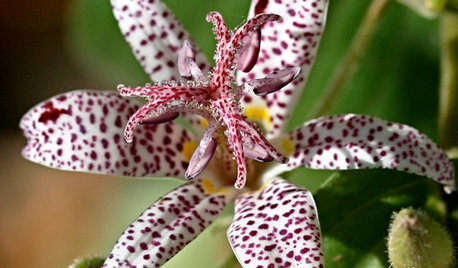
SUMMER GARDENING10 Perennials to Extend Your Garden's Summer Color
Revive summer-weary gardens with outstanding late bloomers such as toad lily, Russian sage, blanket flower and more
Full Story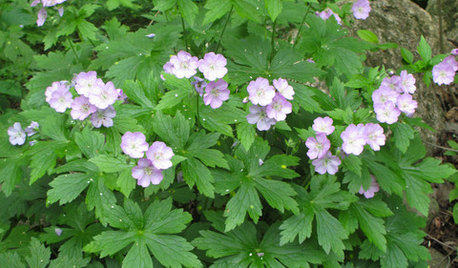
NATIVE PLANTS10 Essential Native Perennials for the Great Lakes and Upper Midwest
These adaptable native plants thrive in a variety of conditions and will provide flowers throughout the season
Full Story
PLANTING IDEASWant a More Colorful, Natural Garden? Try a Perennial Meadow
Spend less time tending and more time taking in the sights by improving on Victorian and prairie garden designs
Full Story
GARDENING GUIDESTop 12 Summer-Blooming Perennials for Deer-Resistant Drama
Can you have garden color, fragrance and exciting foliage with hungry deer afoot? These beauties say yes
Full Story
GARDENING GUIDES6 Plants That Beat Butterfly Bush for the Wildlife Draw
It's invasive, a nonnative and a poor insect magnet. Check out these better alternatives to butterfly bush in the garden
Full Story
GARDENING GUIDESGreat Design Plant: Bugle Weed, a Quick Ground Cover
It’s highly adaptable, suppresses weeds, reduces erosion and provide weeks of bright flowers. Just watch for invasiveness
Full Story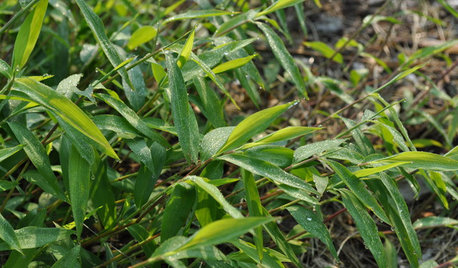
GARDENING GUIDESThe Essential Weed Hit List
Learn how to recognize and control 5 weedy plants that have achieved invasive status throughout the U.S.
Full Story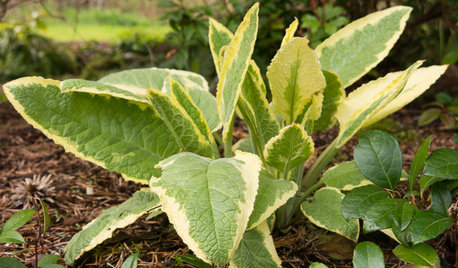
GARDENING GUIDESGreat Design Plant: Axminster Gold Comfrey for Sun or Shade
Plant this perennial for bold color that will light up shady spots, sparkle in the sun and add interest from spring until fall
Full Story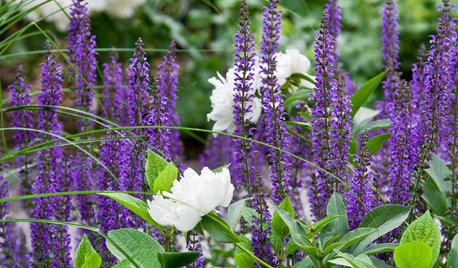
GARDENING AND LANDSCAPINGGarden Tour: Colorful, Serene Woodland Near Boston
Exuberant perennials, outdoor rooms and a surrounding woodland come together to create a beautiful landscape in Massachusetts
Full Story












56steps